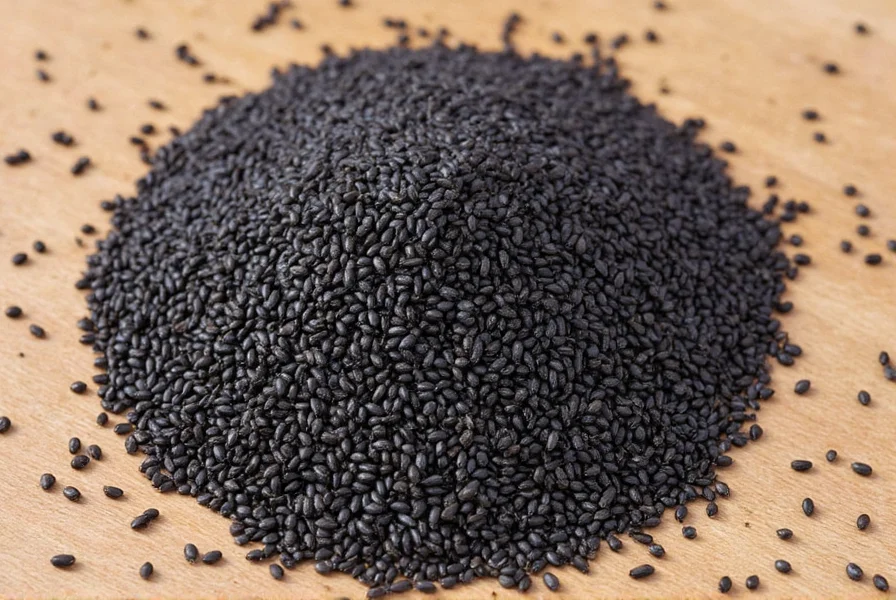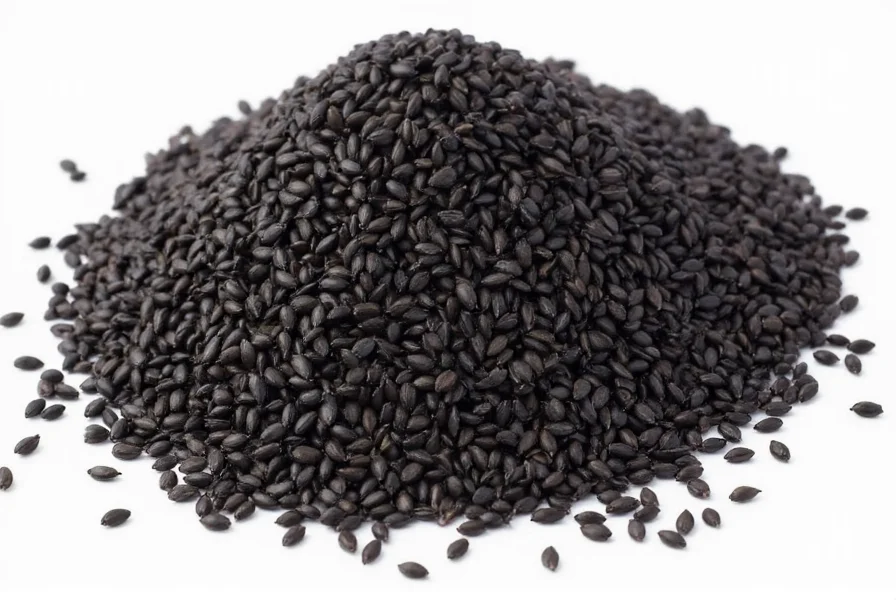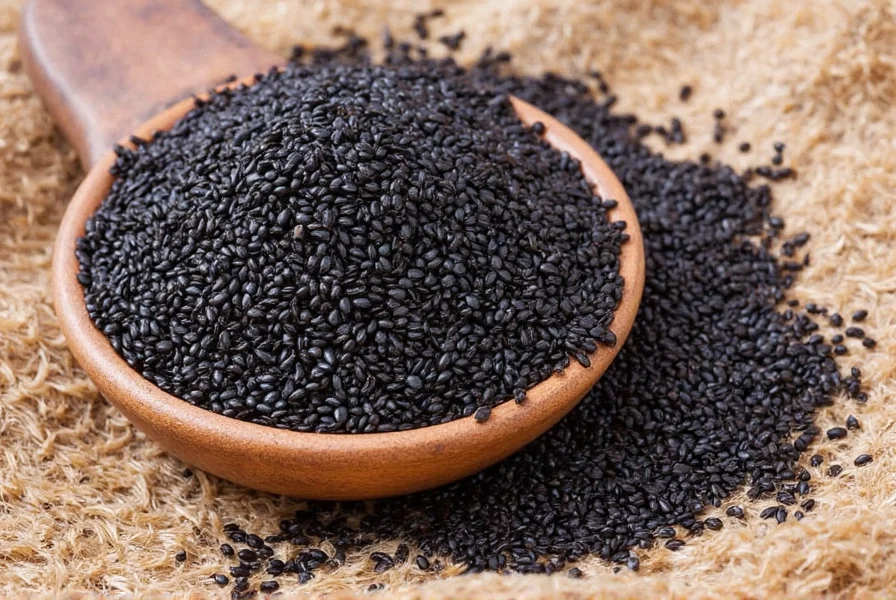Black sesame seeds (Sesamum indicum) represent one of the oldest oilseed crops known to humanity, with archaeological evidence tracing their cultivation to ancient Mesopotamia and the Indus Valley civilization. These tiny oval-shaped seeds measure approximately 3-4mm in length and maintain their distinctive black pigment due to high concentrations of anthocyanins and sesamol—powerful antioxidants not found in significant quantities in hulled white sesame varieties.
Historical Significance and Global Cultivation
Historical records indicate that black sesame seeds were considered sacred in ancient Egypt and featured prominently in Ayurvedic medicine practices dating back to 1500 BCE. Traditional Chinese Medicine has utilized black sesame seeds for centuries as a "jing" tonic believed to nourish the liver and kidneys. Today, major producers include China, India, Myanmar, and Sudan, with Asian varieties typically smaller and more intensely flavored than African cultivars.
Physical Characteristics and Flavor Profile
Visually distinct with their jet-black exterior, these seeds maintain their fibrous hull which contributes to their crunchier texture compared to hulled white sesame seeds. When toasted, black sesame seeds develop a complex flavor profile—earthy with subtle bitter notes and a rich nuttiness that intensifies when ground. This characteristic makes them particularly valuable in both sweet and savory applications across various culinary traditions.
| Nutrient (per 1 oz/28g) | Black Sesame Seeds | White Sesame Seeds |
|---|---|---|
| Calories | 160 | 160 |
| Calcium | 14% DV | 9% DV |
| Iron | 19% DV | 14% DV |
| Magnesium | 25% DV | 20% DV |
| Fiber | 3.5g | 3.3g |
| Antioxidants | High (anthocyanins) | Low |
Black vs White Sesame Seeds: Key Differences
The most significant distinction between black and white sesame seeds lies in their processing. White sesame seeds undergo dehulling—the removal of their outer husk—which dramatically reduces their fiber content and antioxidant profile. Black sesame seeds retain their natural hull, preserving higher levels of protective compounds like sesamin and sesamolin. Nutritionally, black varieties contain approximately 20% more calcium and significantly higher concentrations of anthocyanins, the same antioxidants found in blueberries and blackberries.
Culinary applications differ substantially between the two varieties. Black sesame seeds maintain their striking color when cooked, making them ideal for visual presentation in dishes like Japanese goma-dofu (sesame jelly) and Korean heugimja (black sesame paste). Their stronger flavor profile stands up well to high-heat cooking methods, while white sesame seeds offer a milder taste better suited for delicate applications like tahini.
Scientifically Supported Health Benefits
Research indicates black sesame seeds possess notable health-promoting properties. A 2021 study published in the Journal of Food Science and Technology demonstrated that regular consumption of black sesame seeds significantly improved lipid profiles in participants with mild hypercholesterolemia. The high lignan content (particularly sesamin) shows promise in supporting liver function and reducing oxidative stress.
Nutritionally, black sesame seeds serve as an exceptional plant-based calcium source—providing more calcium per serving than milk by weight—which makes them particularly valuable for bone health in dairy-free diets. Their magnesium content supports healthy blood pressure regulation, while the combination of fiber and healthy fats promotes sustained energy release and digestive health.
Culinary Applications Across Global Cuisines
From East to West, black sesame seeds feature prominently in diverse culinary traditions. In Japanese cuisine, they're toasted and ground into goma for dressings and marinades. Chinese bakers incorporate them into mooncakes and steamed buns for both flavor and visual contrast. Middle Eastern chefs use them as a decorative element on breads and pastries, while modern Western chefs leverage their dramatic color in desserts and savory dishes alike.
For home cooks exploring how to use black sesame seeds, toasting them in a dry pan until fragrant dramatically enhances their flavor. They can be sprinkled on salads, incorporated into bread dough, blended into smoothies, or processed into a rich, dark paste similar to tahini. The seeds' natural oils make them particularly suitable for creating emulsified dressings and sauces that maintain stability without additional thickeners.
Proper Storage Techniques for Maximum Freshness
Due to their high oil content (approximately 50% by weight), black sesame seeds require careful storage to prevent rancidity. Store them in an airtight container in a cool, dark place for up to three months. For extended shelf life, refrigeration preserves freshness for six months, while freezing maintains quality for up to one year. Always check for any off odors before use, as rancid sesame seeds develop a distinctly unpleasant smell.

Traditional Medicinal Uses and Modern Research
Traditional medicine systems have long valued black sesame seeds for their purported health benefits. Ayurvedic practitioners recommend them for strengthening bones and hair, while Traditional Chinese Medicine classifies them as a "warming" food that nourishes the blood and kidneys. Modern research increasingly supports these traditional uses, with studies indicating potential benefits for hair health, bone density, and cardiovascular function.
When considering are black sesame seeds healthy, the evidence suggests they offer significant nutritional advantages over their white counterparts. Their complete protein profile (containing all nine essential amino acids), healthy fat composition, and rich mineral content make them a valuable addition to balanced diets. However, like all calorie-dense foods, moderation remains important—approximately one tablespoon daily provides optimal benefits without excessive caloric intake.

Conclusion
Black sesame seeds represent far more than just a colorful culinary ingredient—they're nutrient powerhouses with a rich historical legacy and scientifically supported health benefits. Their distinctive flavor, superior nutritional profile compared to white sesame seeds, and versatility across culinary applications make them worthy of regular inclusion in health-conscious diets. Whether you're exploring black sesame seeds meaning in traditional medicine or simply seeking to enhance your cooking with this ancient ingredient, understanding their unique properties helps maximize their potential in both kitchen and wellness routines.
What makes black sesame seeds different from white sesame seeds?
Black sesame seeds retain their natural black hull, which contains higher concentrations of antioxidants, fiber, and minerals compared to white sesame seeds that have had their hulls removed. This gives black varieties a stronger flavor, crunchier texture, and superior nutritional profile, particularly in calcium and anthocyanins.
Are black sesame seeds healthier than white sesame seeds?
Yes, black sesame seeds generally offer greater nutritional benefits than white varieties because they retain their hulls. They contain approximately 20% more calcium, higher levels of antioxidants like anthocyanins, and slightly more fiber. The hull removal process for white sesame seeds significantly reduces these beneficial compounds.
How should I store black sesame seeds to maintain freshness?
Store black sesame seeds in an airtight container in a cool, dark place for up to three months. For longer storage, refrigerate for up to six months or freeze for up to one year. Their high oil content makes them susceptible to rancidity, so always check for off odors before use.
What are the primary health benefits of black sesame seeds?
Black sesame seeds provide excellent plant-based calcium for bone health, contain lignans that support cardiovascular function, offer substantial magnesium for blood pressure regulation, and deliver powerful antioxidants that combat oxidative stress. Research suggests benefits for cholesterol management, liver function, and hair health.
How can I best use black sesame seeds in cooking?
Toast black sesame seeds in a dry pan until fragrant to enhance their flavor. Use them as a garnish for salads and vegetables, incorporate into bread dough, blend into smoothies, or process into a dark paste similar to tahini. Their strong flavor stands up well to cooking and their dramatic color makes them excellent for visual presentation in both sweet and savory dishes.











 浙公网安备
33010002000092号
浙公网安备
33010002000092号 浙B2-20120091-4
浙B2-20120091-4